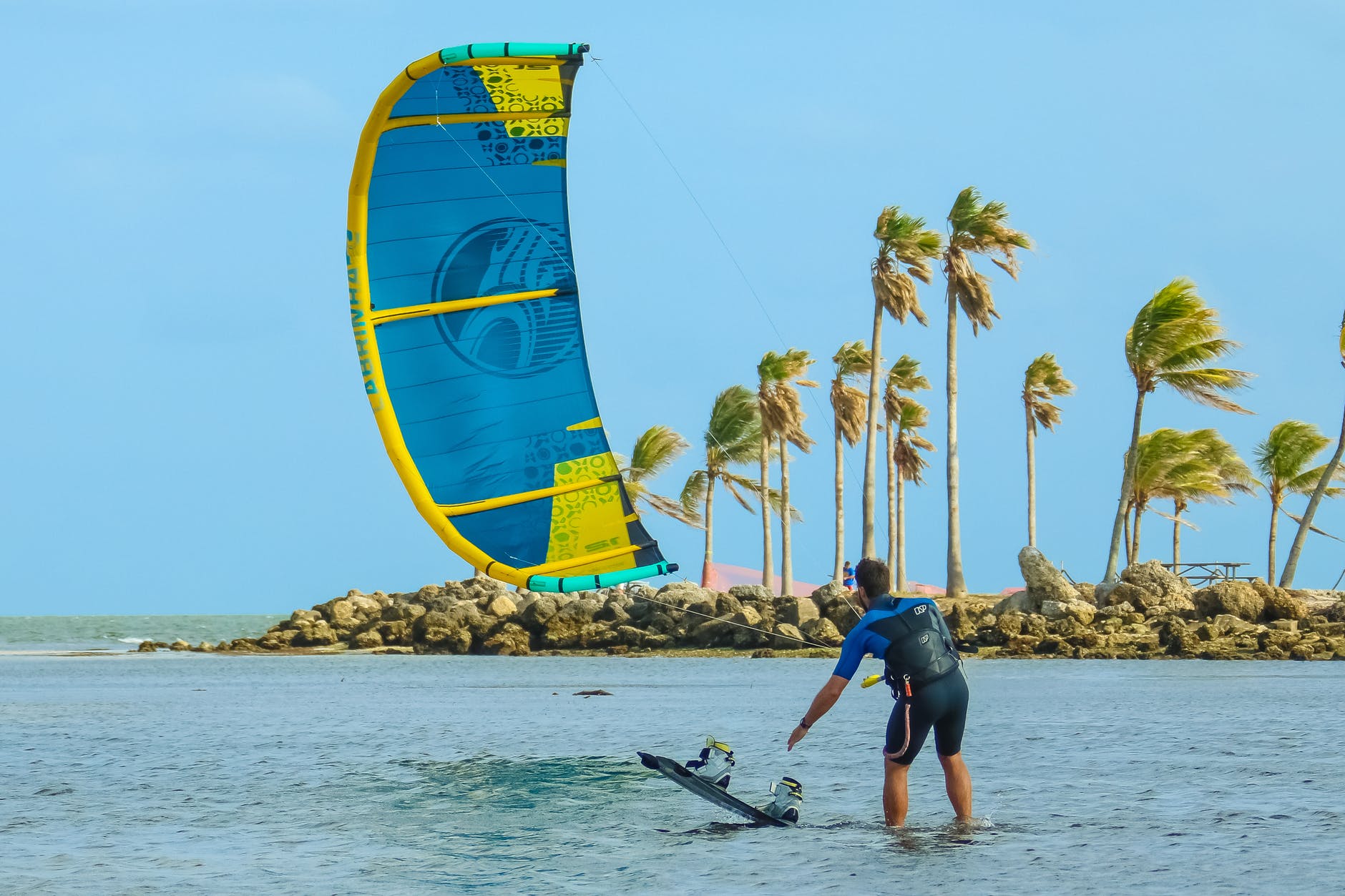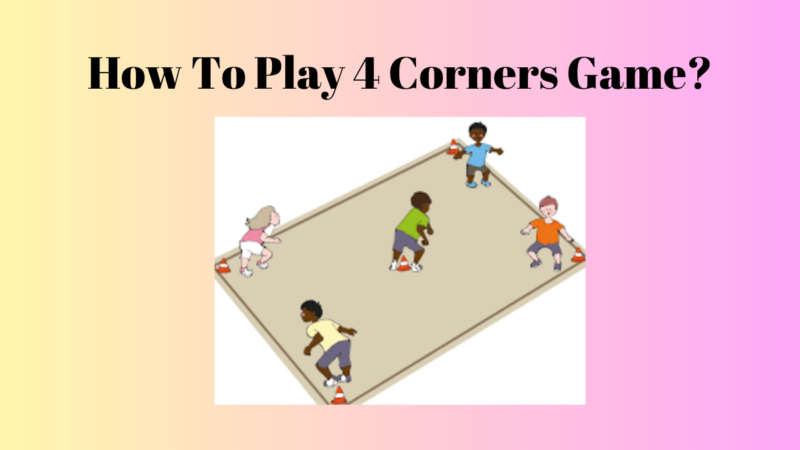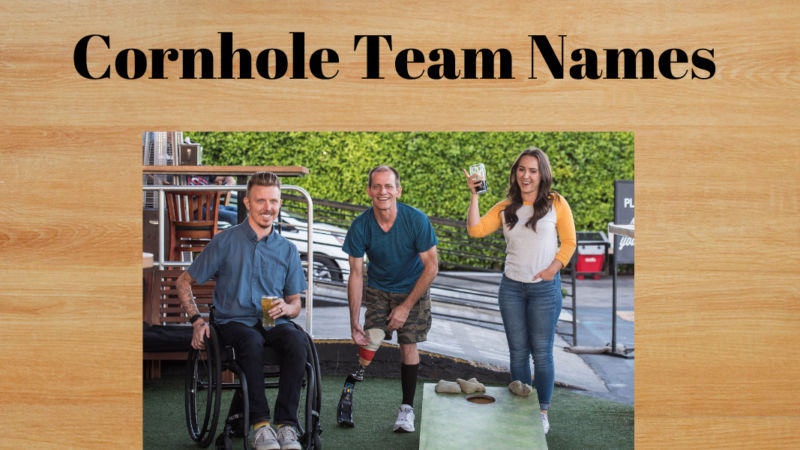A Complete Guide For Kitesurfing

Kitesurfing is one of the coolest watersports; there is a lot of fun to be had with this game. You don’t need to be fit, or build a lot of muscles for kitesurfing because the kite is lightweight. But if you are a beginner, then you will need a few lessons for kitesurfing. A good instructor furnishes you with procedures and safety tips, and without these tips, you’ll put yourself in danger.
Let’s start with basic information about kitesurfing:
What is kitesurfing?
Kitesurfing is also known as kiteboarding. It is a wind-powered water game played using kites. This game has its roots in France; although kitesurfing doesn’t need waves, the wind is the only source needed to power you along. Many different kites are used in this water sport; however, the size of the kites depends on the wind strength. You can determine the wind strength by an anemometer and nowadays, modern kites have depowered options to reduce the power in the kite.
This watersport is done on choppy seas or mirror-flat lagoons. Kitesurfing or kiteboarding is one of the cheapest water sports. It came into the limelight in the late 1990s, and the first-ever kitesurfing competition was held in 1998 in Maui. All over twenty-two athletes took part in kiteboarding, and Marcus “Flash” Austin was the winner.
Kiteboarding has developed many tricks so far. This fascinating sport is inspired by windsurfing, surfing, skateboarding, and wakeboarding.
Did you know there are many different types of kitesurfing kites and boards?
The most common kites are foil kites and inflatable kites such as C-Kite, Hybrid Kite, Delta Kite, and Bow Kite.
Leading Edge Inflatable(LEI) Kites
The leading edge inflatable kites are single skin kites with inflatable bladders. This surfing kite comes in many sizes, such as from five to eighteen square meters. The leading edge inflatable kites are divided into four categories: C-kites, Bow kites, Delta kites, and Hybride kites.
C- kites
C-kites are the oldest surfing kite, typically come in four lines, and have the fifth line for safety and relaunch. The lines on this kitesurfing kite attach to the four corners, and the main difference between the C-kite and the other kitesurfing kites is they don’t have any lines. That’s why C- kite is the most preferred kite in wake-style kiteboarders.
Bow kites
Dominique and Bruno Legaigoux invented the bow kites design. It is much shorter and fatter than the C-kites; however, it is more popular than C-kites. Bow kites are slower but are more stable flying in the air. This kitesurfing kite incorporates harnesses to support its leading-edge, hold it in lines with kites, and have a concave trailing edge.
Hybrid kites
Like Bow kites, it incorporates bridles to support the leading edge, and it has some fat arc, which is similar to C-kite. Therefore you can say Hybrid kites are a cross between bow and C-kites. The trailing edge of this kitesurfing kite is convex.
Read More- All The Nitty Witty About Water Polo
Delta kites
Delta kites are triangular and are great kitesurfing kites for beginners. This kitesurfing kite is the most popular and is easy to fly.
Foil kites
This kitesurfing kite is a good choice for training on snow and land with skateboards. Foil kites have various line set-ups like 2, 3, and 4 lines or 2 line systems consisting of rings and a wristband to depower.
In kitesurfing, along with kites, you need boards. Without the board, you cannot start your kitesurfing, it is as important as kites.
Boards
When you walk on water, you need a board, and the boards vary in size and shape. The most popular board is a twin tip, and the other boards are foil boards and directional boards.
Twin Tip
The twin tip board is the most common, and you will use this when learning kitesurfing. This kitesurfing board varies in shape and size that depends on the rider’s weight. The normal size for an adult is 137 cm long* 42 cm wide, and the average size of the child is around 127cm* 36 cm.
Directional Board
This board is designed for wave riding and is great for surfing. Nowadays, many directional boards are made with a complex blend of various materials and molded technologies. These things make boards more suitable for kitesurfing. The directional boards are narrow and thinner than other boards.
Hydrofoil Board
Hydrofoil boards are short and flat, the back of the board is flat. It is attached to a stabilizer and wing. As you gain speed, generate more lift that makes you hover above the water.
Other equipment
In Kitesurf, you need some safety equipment such as a helmet, line cutter, buoyancy aid, etc.
Below are some of the most important equipments that you need for kitesurfing:
Helmets
Kitesurfing is an action sport, and many things can happen. So, the helmet protects your head from falling during kitesurfing.
Line Cutter
During kitesurfing, you need a line cutter for emergency purposes. It is used to cut a line from the kitesurfing kite. Your instructor will show you how to use it.
Buoyancy aid
When you are trying any watersport, it is important to know how to swim. The personal floating device or PFD can give you the buoyancy aid you need to afloat. It will help you to catch your breath after the crash.
Elements you need for kitesurfing.
Just like a car without fuel won’t go, a kite without wind won’t fly. A kite without wind is useless, and the environment plays a vital role in kitesurfing. For this water activity, you need two major elements: wind and water.
Wind
Let’s start with the wind! As you know, the wind is an air particle generated by the sun’s uneven heating of the earth’s surface. Two wind formations can occur during your kitesurf. The wind always affects your kite’s size. You can choose a small kite when the wind is strong and choose a big kite when the wind is light.
Water
For kitesurfing, water is important. Depending on your spot, you will always encounter various water conditions such as wavy waters, flat waters, and anything. Kitesurf in flat water is easy, and it is best for beginners or learners. Remember that, depending on water temperature, you will have to use a wetsuit.
Final Words
Kitesurfing or kiteboarding is the best opportunity to bring people together. It is an amazing outdoor sport that you should learn. Once you master this sport you can take part in a kitesurfing competition. The benefits of Kitesurf are unlimited, and it makes you feel relaxed. Next time when you go out on a trip, try this water sport with your friends and family.






